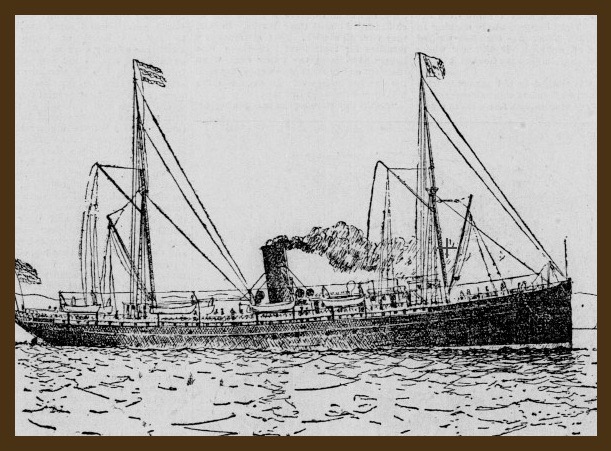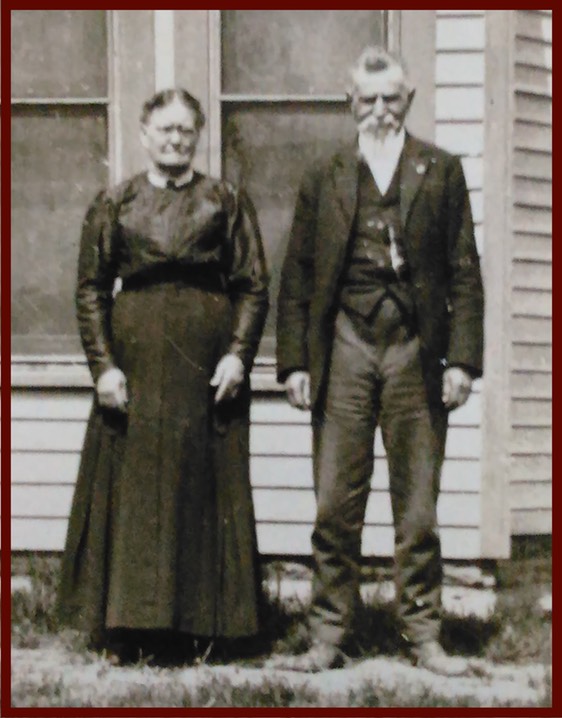
Among the pictures of the Stofer family I’ve received lately, my favorite is one of young Jacob G. Stofer, who brought his family from Iowa to Kansas in the late 1870’s. According to “The Lovewell Family,” Jacob’s experience as a Civil War volunteer resulted in a new, no-frills spelling of the family name, and a stylish beard. Rejected at the recruiting office for being too young, Jacob Stouffer remade himself as an older man. He let his whiskers grow, lied about his age on the enlistment form and spelled his last name differently than he had on the previous occasion. According to his descendants, the change in spelling would also assure that it wouldn’t leap out at his mother from newspaper casualty lists if the worst happened.
The 126th Illinois infantry suffered comparatively light losses in the war, with only six of their number listed as killed in battle. Of course, as was typical of 19th century armies, another 196 of them died of disease. Emerging from his service unscathed, Jacob decided to retain both his new name and his lucky beard.
The photo may have been a tintype or ferrotype, an in-camera positive that produced a mirror image of the subject, like the famous one of Billy the Kid which led to the myth that he was a left-handed gunman. Later pictures depict Jacob, like 90% of humanity, parting his hair on the left side. In the tintype (if it is one), the part is on the right. While he seems young enough for the likeness to date from the Civil War era, the photographer was A. W. Zumbro of Macomb, Illinois, who first appears in that city's directory in 1875. The photo may have been taken just before Jacob moved with his wife and four children to Iowa, where Ben Stofer was born in 1876. A year later the family moved to Kansas, which is where Emma was born in 1880 and where Ben met his future bride, Mary J. Lovewell.
Two years back I wrote about that early-day siren of the silver screen Greta Granstedt, after noticing that she seems to have been the grand-niece of Malcolm Granstedt, the unfortunate boy who made history by being slain with a spear at Scandia, Kansas, in June of 1869 during the last Indian raid in Republic County. Born Irene Granstedt at Scandia in 1907, Greta was also Ben Stofer’s niece, the daughter of Ben’s sister, Emma Stofer Granstedt. By the age of 14 Greta already had endeared herself to west-coast newspapers by shooting her boyfriend, either by accident or out of spite because he had taken another girl to a dance.

Although the boy did not die and headlines finally subsided, her parents must have had second thoughts about their recent move from Scandia to Mountain View, California. Estranged from her for a time, the Granstedts had begun to mend fences with their headstrong, starry-eyed daughter by the summer 1929, when they headed to Los Angeles for a family reunion.
Despite Emma’s misgivings, Theodore Granstedt decided to take advantage of the cut-rate fares offered to entice passengers to board a rusting hulk called the San Juan (the sketch on the left dates from 1895) to make the coastal voyage.
As the steamer left San Francisco on a fog-shrouded night, a tanker plowed into the San Juan, capsizing her and sending her to the bottom in a few minutes. After thrashing in the water and calling for help, Theodore Granstedt was picked out of the floating debris along with about forty others. Emma and three more former Scandia residents, Mr. and Mrs. John Olson and their daughter Helen, were among as many as 77* passengers and crew who drowned. Ben Stofer and his brother Jake immediately set out from Republic County for California to comfort their brother-in-law and their bereaved nephews and nieces.

Less than a year later, after recovering from a severe leg injury suffered in the disaster, it was Theodore Granstedt’s turn to be summoned halfway across the country. Accompanied by one of his daughters he returned to Scandia following the death of his mother-in-law Nancy Adeline Stofer. Nancy's husband Jacob, Sr., had died six years earlier. After a prosperous career tending their farm in the Lovewell area, Jacob and Nancy had enjoyed a long retirement together in their house at Scandia.
Their tempestuous granddaughter Greta Granstedt never became an A-list star, but was featured in several memorable films, played mostly supporting roles after 1940, and later found steady work in character parts on television until retiring in 1970. She is remembered today as much for her marital record as her filmography, though half of her eight marriages were annulled. She seemed to attract scoundrels who didn’t bother divorcing their wives before getting back in the game.
After experimenting with the name “Eraine," Irene Granstedt from Scandia had launched herself into screen acting by posing as a Swedish immigrant named “Greta." Such reinvention did not make her into another another Garbo, just as a stint in the Army did not earn Jacob Stofer much in the way of military glory. He went in as a 17-year-old private in 1862, serving three years with a unit that never saw the front lines, and was discharged as a private in 1865.
In the end, however, things worked out for both of them. Irene appeared in three plays on Broadway, found steady work in Hollywood, and is appreciated by film buffs as “Greta" Granstedt to this day. Her grandfather faithfully answered President Lincoln’s call for volunteers, albeit under an alias, survived the war to earn a small pension, and, as we see, kept his beard neatly combed until the very end. Today his descendants along the male line are known as Stofers, rather than Stouffers.
By the way, Greta’s address in Los Angeles, 6331 Hollywood Boulevard, today is home to the Church of Scientology International and the L. Ron Hubbard Life Exhibition. It seems appropriate somehow, but I’m not sure why.
*The death toll is sometimes reported as 68, 72, or 77. Tickets continued to be sold until the moment the ship launched, leading to an unreliable count of passengers.
Stofer family pictures provided by Ashley Gresham - Sketch of the San Juan public domain from Wikipedia